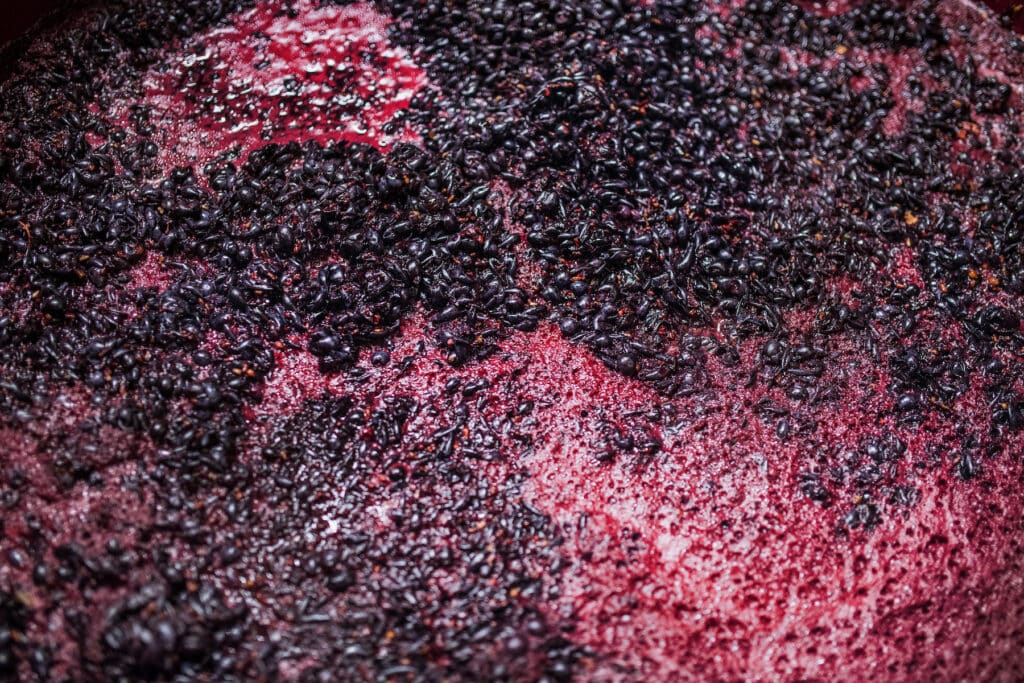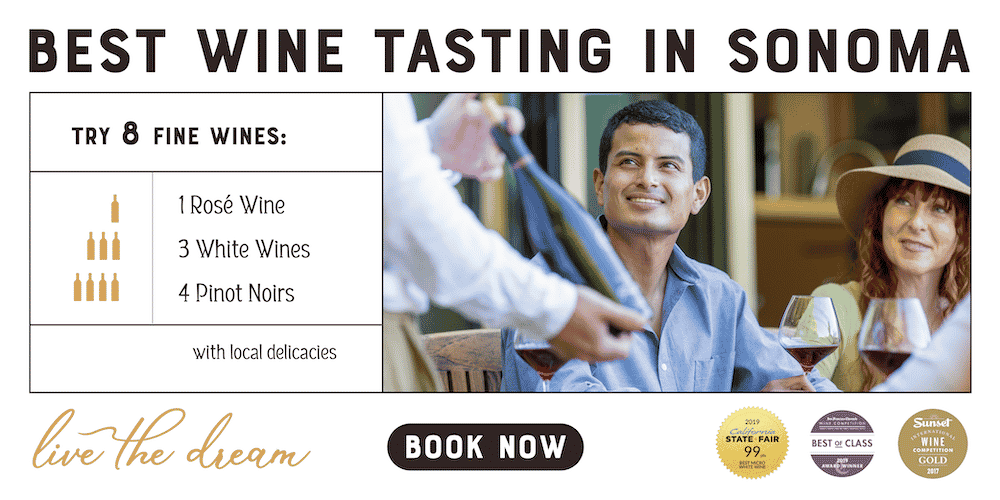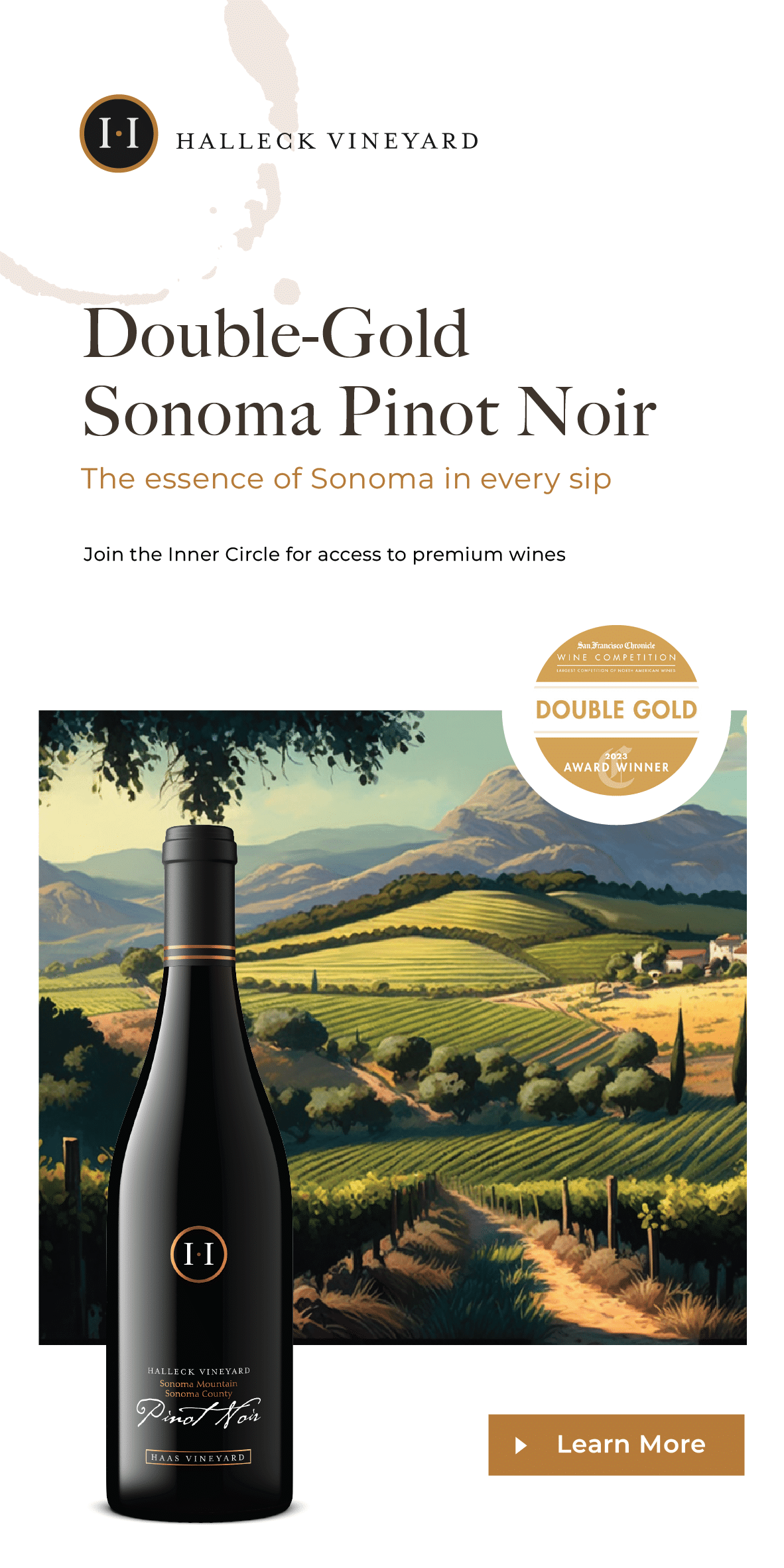Pour Decisions: Favorite Sonoma Biodynamic, Organic or Natural Wines


Despite the wide-ranging and heated discussions around natural and organic wine, ultimately, the difference, here in the US, is quite simple.
Organic wine is certified by the FDA. Natural wine is not.
This is just fine for many passionate, anti-authoritarian, and raucous natural wine community members who suspect the futility of effective government regulation. The initial cost of organic certification (around $6,000), the price of annual inspections required to maintain certification, and the paperwork involved are all formidable barriers in acquiring that official organic seal.
This can be prohibitively expensive for small independent producers, who are more prominent in Sonoma County. And it’s an important factor in the rise of natural wine. However, there is also a very real danger that wineries and winemakers may claim to be “natural”, but unlike certified organic wine, there is no way to verify how they farm their vineyards or how they create wine in the cellar.
Nonetheless, organic and sustainable wine brands, also known as zero-zero – which essentially means zero additives – are here to stay. There’s even biodynamic wine, which uses a program of different organic preparations to enhance and re-vivify the life of the soil, and are applied in conjunction with natural rhythms like moon cycles. So in this golden age of grape juice when our wine cellars are filled with a vast array of choices, it should be easy to pick what we want. But it isn’t.
Tyranny of Choice: Biodynamic, Organic and Natural Wine
The paradox of increasing freedom of choice is the necessity for an ever-sharper sense of discernment.
Every day seems to introduce some new specialized production method. Every day seems to unearth an ancient, long-lost-and-now-found grape varietal only the deepest oenological obsessives have knowledge of.
Speedy advances in transportation, storage, and marketing have allowed previously far-flung locales like the Canary Islands and Tasmania to occupy coveted menu/shelf space next to Sonoma County Russian River Valley Pinot Noir and Napa Valley Cabernet Sauvignon.
For the consumer, there is confusion and skepticism. But there’s also curiosity and even better, bravery.
We want to experience something novel and exciting without accelerating the destruction of our environment through chemically dosing our agricultural products. We want renewable energy. We want to be environmental stewards. We want to know what toxins we’re putting in our bodies. And we want to know the differences between organic and natural wines.

Organic vs Natural Wine: Science and Sulphur in Sonoma
It is important to understand that the term “natural wine” has no widely accepted definition nor legal certification and regulation, both in the United States and around the world.
In fact, France is the only country to recognize a definition of natural wine. In March 2020, The Institut National de l’Origine et de la Qualité (INAO), France’s official agricultural organization, recognized a system called Vin Méthode Nature. In this system there are two tiers of certification: those with no added sulfites, and those that add less than 30 mg/L sulfites. That is all. And this definition doesn’t apply anywhere else.
Sulfites are a topic worthy of a PhD dissertation alone. There are huge, vehement disagreements between organic and natural wine producers on the role of sulfites in wine. In the most general sense, sulfur is a naturally occurring compound winemakers use to prevent flaws and spoilage. Sulfites are added to stop the fermentation process or preserve the flavor profile.
It is a key structural component of the wine. Many highly respected vintners are adamant that without sulfur wines don’t age well. However, many natural winemakers believe it is an aspect of “intervention” they could do without. Hence, the zero-zero category. Some are dogmatic about their practices. Some are not. It remains a point of contention.
But there is complexity and overlap here, as most (though not all) natural wine producers acquire grapes from organic vineyards. And organic wines are legally allowed to use conventional yeast and sulfur additions, which many natural winemakers would scoff at. In the end, it’s up to the winemakers to decide.

Natural Wine and Sonoma Wineries
To keep it short: an unofficial grouping of French vignerons in the 1980s started to loudly reject the modern wonders of industrial chemistry and forge ahead with what they saw as more sustainable approaches to winemaking.
Their approach revolved around a constellation of beliefs and practices that are not universally agreed. Their viticultural counterparts in Italy, under the Indicazione Geografica Tipica (IGT) designation, pursued the same lofty ends in response to the mass production of what natural winemaking advocates like New York Times wine writer Alice Feiring and others regarded as Frakenwines.
Sustainable farm practices behind natural wines
Regenerative farming, without fertilizers or pesticides (and in some cases, irrigation) to build a permaculture that builds instead of depleting the soil; eliminating additives like commercially produced yeast; eschewing oak barrels (for clay vessels); and generally aiming for the lowest possible human intervention in the winemaking process, whether that be eliminating sulfur additions or throwing dry-ice on grape must (aka the “cold carbonic” method).
The carbonic maceration process, which involves whole cluster fermentation in a closed anaerobic vessel, is considered to be a mainstay in natural wine production. But carbonic maceration only begins the fermentation process. Winemakers who use this process, may still inoculate the juice with additives, so some may say it is not entirely natural. At the same time, many commercial yeast strains, which are used for inoculation, are naturally occurring strains.
Natural wine production is meant to bring more distinction, clarity, and individual character to every little spot of land and grape on earth. It is meant to create wine with more personality and variation, wine with less pesticide residue and carcinogenic compounds. Natural and organic wine methods go hand-in-hand with the notion of purity, or the perfect expression of the characteristics of the grape through the terroir.
In connection with this idea, a profound respect and reverence for the environment is found among all natural and organic winemakers. The overall goal of the movement, besides making exceptional wine, is to create a healthy ecosystem for the community. They provide clean air, fresh water, medicines and food security. They also limit disease and stabilize the climate. Therefore, these types of wine are far more sustainable than those farmed by conventional methods which contaminate the air and water and deplete (and eventually destroy) life-giving nutrients in the soil.
Natural winemaking in Sonoma
For natural wine producers, the emphasis is strongly, if not exclusively, on the vineyards themselves. Adherents believe this allows for a more authentic expression of grapes and terroir. The dogma has no trouble finding fresh believers. Since the 1980s “natural wine” has bloomed into a major international phenomenon. Every relevant winemaking country is on this train, and it’s not going to stop.
Idlewild Wines, which has a crown vineyard above the Russian River Valley and a Tasting Room just off the plaza in Healdsburg, is an excellent California example of this worldwide movement. Spearheaded by Sam Bilbo, this Sonoma winery grows Piedmontese varieties (Nebbiolo, Barbera, Cortese) planted in Mendocino County. All those vineyards are maintained by holistic farming practices like composting and carbon sequestration. Pesticides are not sprayed. There is no oak aging. Native yeast is judiciously used, and a minimal amount of sulfur is added at bottling.
Organic Wine and Sonoma Wineries
Organic wines start with organic grapes. Organic vineyards undergo a rigorous five-step verification process in the United States. Both growing the grapes and the conversion of those grapes into wine must follow these requirements, which can be found in lengthy detail on the USDA website. Admittedly, this is an expensive and time-consuming process, but it does yield the assurance to the consumer that the wine and the vineyards have undergone inspection and are truly “organic”.
Yet it’s very important for the consumer to keep in mind that organic agricultural production still uses pesticides and herbicides that USDA’s organic certification standards have deemed acceptable. Just because something is labeled “organic” does not mean that no pesticides or herbicides are used. It simply means that the ones applied met the USDA’s production standards for the term.
Some Sonoma winemakers label sustainably farmed and otherwise organic wines as simply “natural”
Halleck Vineyards typifies the small producer in Sonoma County. Halleck Vineyard makes two organic red wines, but given the expenses associated with certified organic, which includes maintaining three years of diligent records in English (most farmworkers speak only Spanish), their wines are not certified as organic and must be marketed as natural wines, ever though their farming practices are regenerative, sustainable, and 100% organic. The Halleck Vineyard Estate Grown Sonoma Coast Pinot Noir, which has been judged the best Pinot Noir in America again and again, comes from a tiny one acre vineyard about 900 ft above sea level in southwest Sebastopol, bordering the new West Sonoma Coast AVA.
Planted in 1993, the vineyard has never seen chemical spraying or invasive mechanization. Organic practices allow the fruit to get naturally ripe and highly concentrated. The wine undergoes fermentation with native yeast, but Halleck likes to add about 30% new oak to the wine, leaving it in the barrel for ten months. This is one major difference between organic and natural winemaking. One will often see organic producers using new oak, while natural winemakers often opt for clay or stainless steel tanks.
Do Sonoma Organic Wines have Fewer Chemicals than Natural Wines?
Organically grown grapes cannot be treated with any synthetic pesticides, fungicides, insecticides, or fertilizers.
This fact alone makes them a much healthier alternative to conventionally produced wine, which has tons upon tons of harsh chemicals sprayed on them every year. Despite this, certified organic wine is allowed to have about 70 different chemicals added to it. These are mostly organic and naturally occurring acids, salts, and sugars (the list can be found on the FDA’s website). The U.S. Food and Drug Administration prohibits any organic products from using chemicals that have an adverse effect on the environment or on human health.
But even though organic wine is generally recognized to be healthier and safer than conventional wine, the actual scientific data regarding the importance of organic production on the chemical content of wines is shockingly scarce. There are only a few studies coming out, all from European countries such as Italy, Croatia, and Romania, none from the US. What they have found is quite enlightening: the mineral (heavy metal) composition of wines depends on factors different from organic/conventional production methods.
The landmark Naughton Study, published in 2008, rocked the wine world by revealing that the vast majority of wines in Europe contained dangerous levels of toxic heavy metals. This meant that, in a very real way, it didn’t matter if the wine was made by natural, organic, or conventional methods. Toxic heavy metals saturate our air and water, and so they saturate our wines. These are called “priority pollutants” and can have potentially deadly effects if their concentrations are not kept under legally allowed limits.
Sustainable farming is not enough to produce organic grapes
A grapevine is like an ecological vacuum cleaner. It sucks in everything from everywhere. Many wine characteristics, such as grape ripeness, taste, aroma, and more, are under the hidden influence of these “priority pollutants” because of the absorbent nature of the grapevine.
You could be an outstanding natural boutique winery in Sonoma. But, if your neighbor is a conventional Monsanto farmer, that’s trouble. Contamination of your wine by “priority pollutants” can happen at any stage of the process.
A big gust of wind can take a synthetic pesticide cloud down the road and into your vineyard. Heavy metal contamination may be caused by long contact of acidic wine with aluminum, brass, stainless steel, and wood used in machinery and pipes, casks, and barrels. Or the chemicals you use for cleaning and sanitation might find their way into the must. Or maybe your vineyards are near the roadway. Those often contain high levels of cadmium and lead from vehicle exhaust fumes.
Nearby commercial industries, city waste management, and traffic may contribute to the introduction of metals into soil, grapes, and ultimately into the final product. Collective environmental circumstances influence soil, climate, ripeness, transport, and storage. Even glass bottles and foil capsules can seep heavy metals into the wine.

The reality is, organic wines are only “better” for you in the sense that they eliminate the main carcinogenic compounds which are intentionally used in the production of conventional wines. The less you are poisoned by your food and drink, the better. Yet these effects are often systemic and compounded with time: the longer you drink in life, the more it will affect you. It’s not a glass at night that’s bad. It’s a glass at night for 20 years that could be detrimental to your overall health.
But this, in a nutshell, is exactly what the natural wine movement seeks to do. It seeks to help safeguard the planet’s ecosystem, so we don’t have to be inundated by toxic heavy metals anymore. And we can enjoy those 20 years of nightly glasses without worrying about our lasting overall health.
Do Natural and Organic Wines from Sonoma Taste Better?
Similarities do exist between conventional, organic, and natural wine. All alcohol causes inflammation in the human body. It doesn’t matter if it was made in your backyard with pristine ingredients or at a mega-chateau with synthetic additives. And no alcohol in excess, no matter how immaculately produced, is kind on your liver.
Conventional, organic and natural wines all cause hangovers. But organic and natural wines are made without the chemicals used by conventional winemakers. This may be less taxing on your biology, but it does not eliminate the negative effects of alcohol, when taken to excess. Additionally, since some wine drinkers develop sensitivities to sulfur at some point in life, they prefer wine with fewer quantities added in. This is a big selling point for natural wines.
Taste of Sonoma natural wine
But taste, of course, is highly subjective. Organic and natural winemaking techniques are not simple or easy to execute, no matter how “hands off” it seems. It takes a highly skilled viticulturist to both grow grapes and make wine with no additives. This is why taste will vary so markedly from producer to producer and from bottle to bottle. Although the aspiration of organic and natural winemakers is the production of wines that taste like where they came from, in practice, there are many wines that lack flavor, structure, and definition. There’s a nasty wet dog and barnyard component that can’t be overcome. Thankfully, very few wines have these qualities. The best practice to develop your taste would be to find a wine shop that knows their stuff and can point you in the right direction.
The Natural Finish
The difference between natural and organic wine is complicated and intertwined. There’s a long and complex history involved in the growth of the natural wine industry, and much of it is tied into organic farming and the creation of a sustainable wine industry, at least in the United States. The number of certified organic vineyards grows year and year, as does the number of self-described “natural” winemakers, but since there are so few laws and regulations in regard to natural wines, the debate between the taste, philosophy, and quality of natural versus organic wines will continue to rage.








